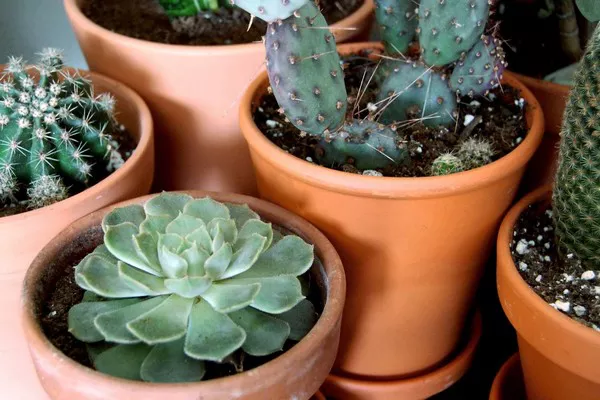Nature never ceases to amaze us with its diverse array of plant life, often characterized by unique adaptations and appearances. Succulents and cacti are two such marvels that captivate garden enthusiasts and horticulturists alike. While they share certain characteristics, these botanical wonders have distinct features that set them apart. This article aims to shed light on the differences between succulents and cacti, exploring their morphology, growth habits, and evolutionary adaptations.
Succulents: The Pudgy Guardians of Arid Lands
Succulents encompass a vast group of plants renowned for their ability to store water in their leaves, stems, or roots. These fleshy adaptations allow them to survive in arid regions with minimal rainfall. Succulents display a wide range of shapes, sizes, and colors, including the popular Aloe, Echeveria, and Haworthia species. Their leaves often appear plump, giving them a puffy and full-bodied appearance. These plants thrive in well-drained soil and require ample sunlight to maintain their vibrant hues.
Cacti: The Prickly Pioneers of Desert Habitats
Cacti, on the other hand, represent a specific group within the succulent family, characterized by their unique spines. These spines, which are actually modified leaves, serve multiple purposes, such as reducing water loss by creating a protective layer that shades the plant and reducing air movement around it. Cacti are typically found in desert regions across the Americas and exhibit remarkable adaptations to harsh, arid environments. Their ability to survive extended periods without rainfall is attributed to their capacity to store water in their swollen stems. Iconic cacti species include the saguaro (Carnegiea gigantea), prickly pear (Opuntia spp.), and barrel cactus (Echinocactus spp.).
Morphological Differences: Leaves, Stems, and Spines
One of the key distinguishing features between succulents and cacti lies in their morphology. Succulents often possess broad and flat leaves that are well adapted for water storage. These leaves may vary in shape, ranging from triangular to ovate or even paddle-like. In contrast, cacti have reduced or absent leaves, with their stems taking on the role of photosynthesis. Their stems are usually cylindrical or columnar, with ridges, ribs, or segmented patterns. The most notable feature of cacti is their spines, which emerge from specialized structures called areoles. Spines serve as a means of defense against herbivores and provide shade, helping to prevent excessive water loss.
Growth Habits and Flowering Patterns
Succulents and cacti also differ in their growth habits and flowering patterns. Succulents often grow in rosette or clumping forms, with their leaves arranged in a circular or spiral pattern around a central point. They produce colorful flowers that bloom in a wide variety of shapes and sizes, attracting pollinators such as bees and butterflies. Cacti, on the other hand, exhibit diverse growth habits, including columnar, globular, or sprawling forms. Many cacti species develop spectacular flowers that emerge from the apex or sides of the plant. These flowers are often large, vibrant, and possess intricate structures, enticing pollinators like bats, moths, and birds.
Evolutionary Adaptations: Surviving in Challenging Environments
Both succulents and cacti have evolved fascinating adaptations to survive in their respective habitats. The evolution of succulents’ water-storing leaves and stems allows them to endure extended periods of drought. These plants efficiently absorb and retain water, which is then utilized during dry spells. Cacti, with their modified spines and reduced leaf surfaces, have evolved to minimize water loss and maximize water absorption. Their expanded stems not only serve as water reservoirs but also enable efficient photosynthesis in the harsh desert sun. These evolutionary strategies have allowed succulents and cacti to thrive in environments that are unforgiving to most other plant species.
Conclusion
In summary, succulents and cacti belong to the larger family of succulent plants but possess distinct characteristics that differentiate them from one another. Succulents are known for their pudgy leaves and remarkable water-storing abilities, while cacti stand out with their unique spines and reduced leaves. Understanding these differences not only helps us appreciate the beauty and diversity of these plants but also guides us in providing them with the specific care and growing conditions they require. So whether you’re drawn to the plump, leafy succulents or the spiky allure of cacti, both will continue to captivate and enchant with their resilience and striking beauty.


